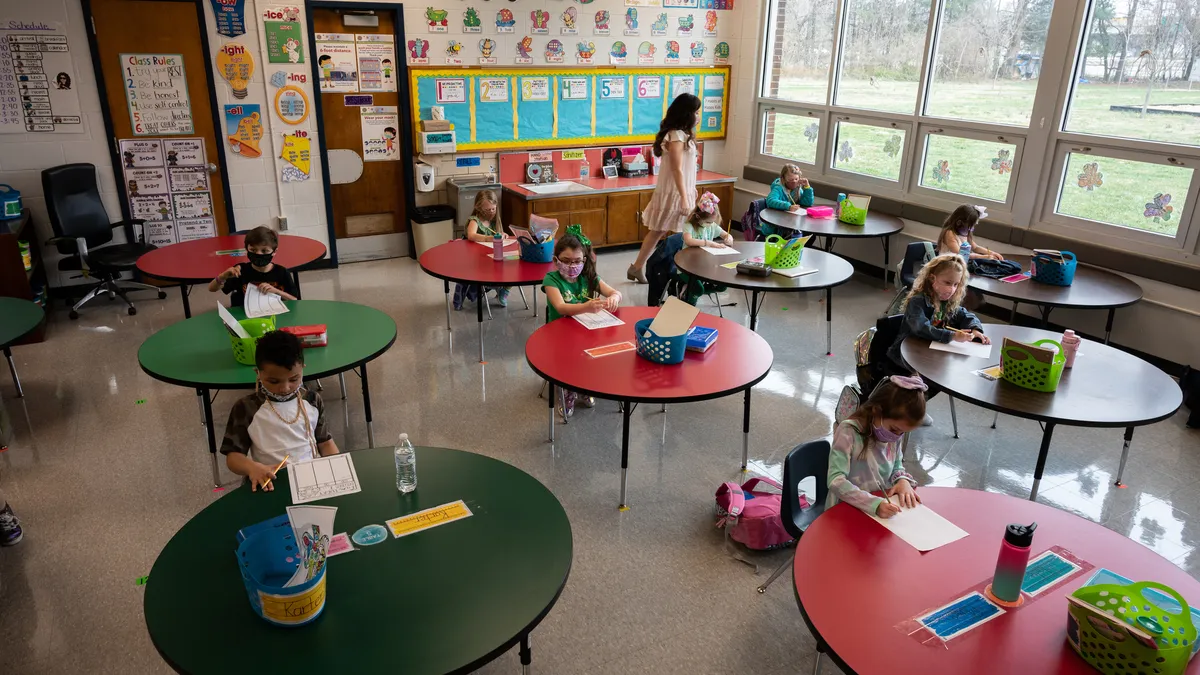Dive Brief:
-
After adopting an active learning style in her classroom in place of traditional lecturing, math educator Adrienne Baytops-Paul found her students were better prepared to collaborate and support each other, she writes for Edutopia.
-
Baytops-Paul draws from process standards of the National Council of Teachers of Mathematics. The approach includes encouraging students to discuss and investigate different problem-solving strategies by themselves, though teachers should consider staying out of this process — even physically standing away — so their presence doesn't sway discussions.
-
Educators should also be thoughtful of how they design math lessons, according to Baytops-Paul. While handing out pages of equations may be easier for teachers, building a curriculum that supports conceptual thinking can help students feel more comfortable working and thinking through math problems on their own.
Dive Insight:
Traditionally, math has been a subject that lends itself to lecture-driven lessons. A teacher stands up, shows students how to solve a problem, and classes do practice problems independently.
But flipping traditional learning models to allow students more class time to share and support each other in the learning process can be effective in math classes, from elementary lessons on addition and multiplication to secondary courses like statistics or calculus.
The “guide on the side” approach allows students to work together, explaining their individual strategies for solving problems and helping each other as they work through concepts from multiplication to algorithms. In the process, students also develop strengths they can apply to their lives outside the classroom.
“Telling is easier,” said Trena Wilkerson, president of the National Council of Teachers of Mathematics. “It’s just not more effective in building understanding. There is a significant difference between getting students to be able to perform an algorithm or solve a type of problem by next Friday and building an understanding that serves individuals for the rest of their lives.”
This style also mirrors the way mathematicians themselves approach their field — which is to work through and persevere, said Megan Burton, president of the Association of Mathematics Teacher Educators and an associate professor at Auburn University’s College of Education. New theories and approaches in the field do not come overnight. Instead, mathematicians build off each other’s work and look for new perspectives as they search for answers.
Successfully implementing this teaching style starts with building a strong connection among students in the classroom, where they can feel safe sharing their ideas or even asking questions of their peers. A sense of community is especially crucial in math classes where students — and teachers — may lack confidence in their ability to succeed in the subject.
“To have a classroom where students can share, they have to be supportive of each other,” said Burton. “You need to develop that community where they’re comfortable making mistakes."





 Dive Awards
Dive Awards







